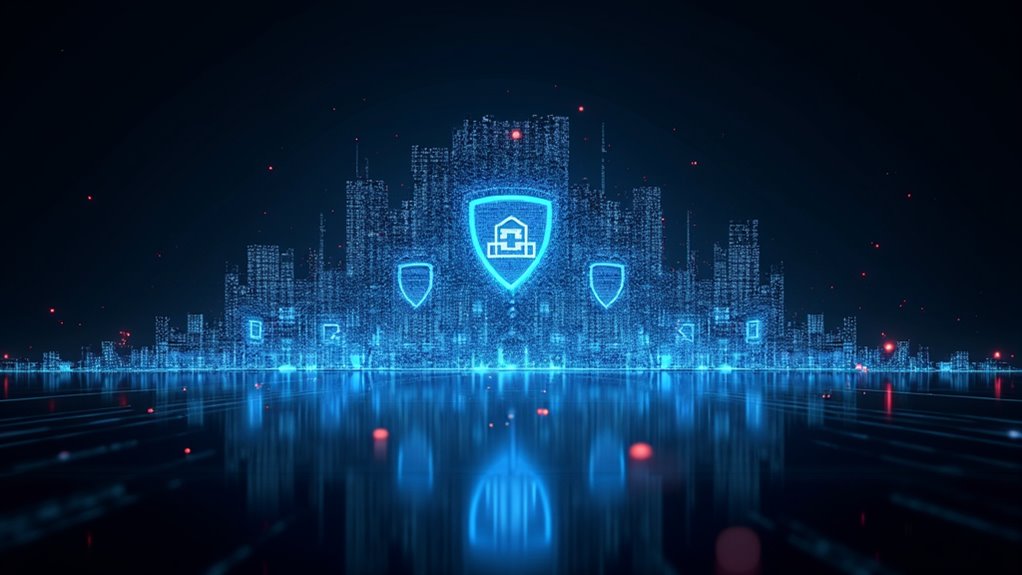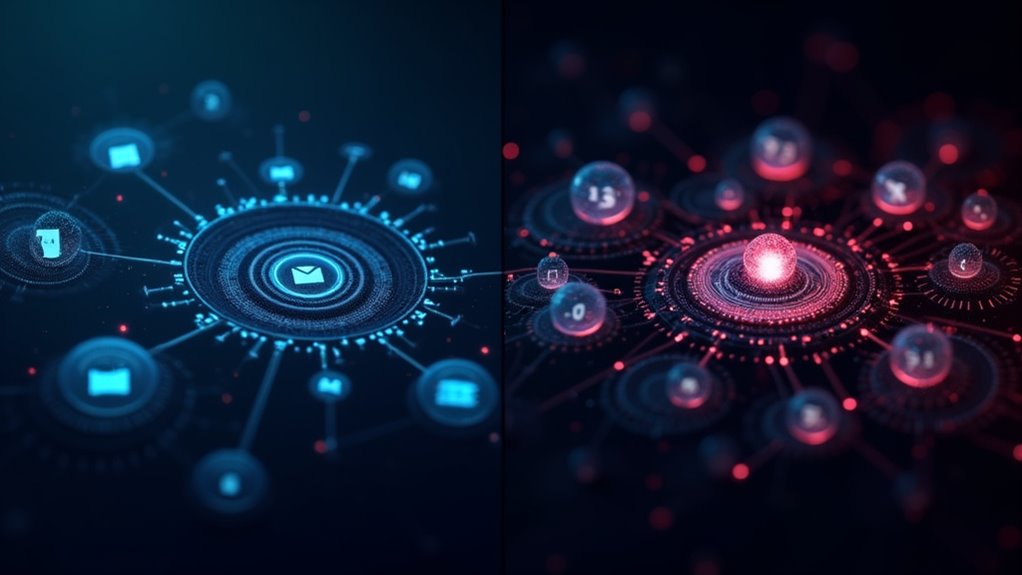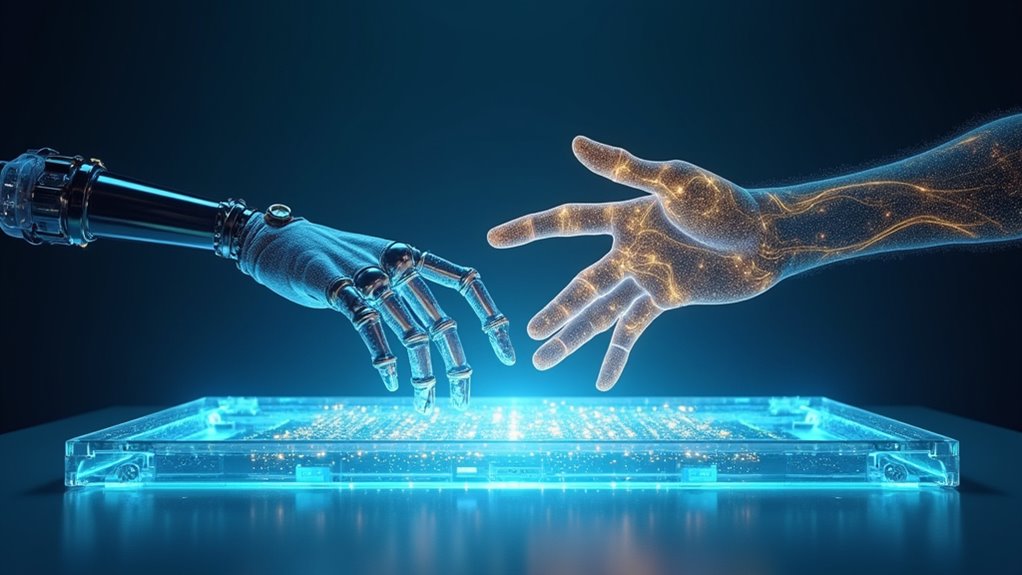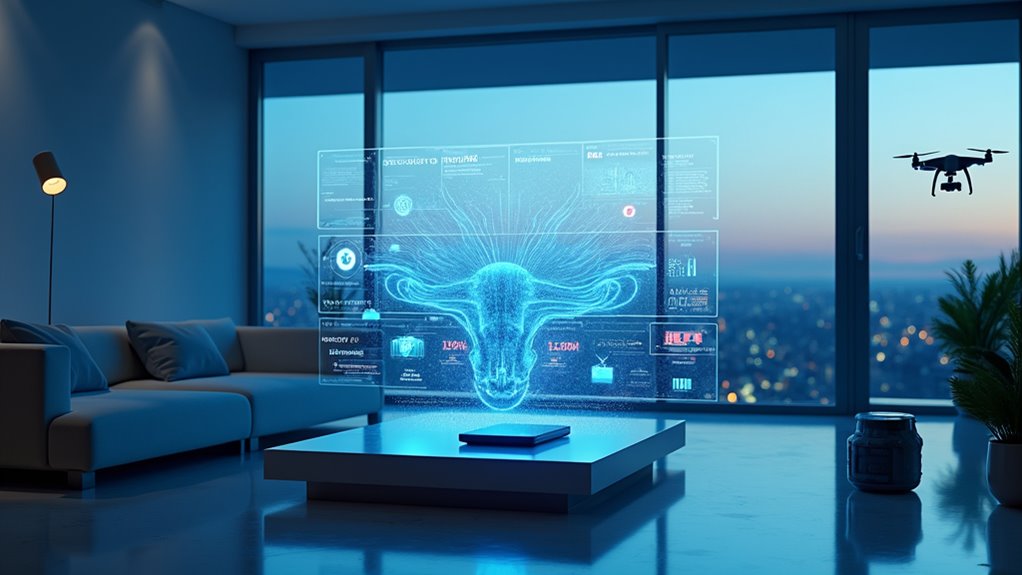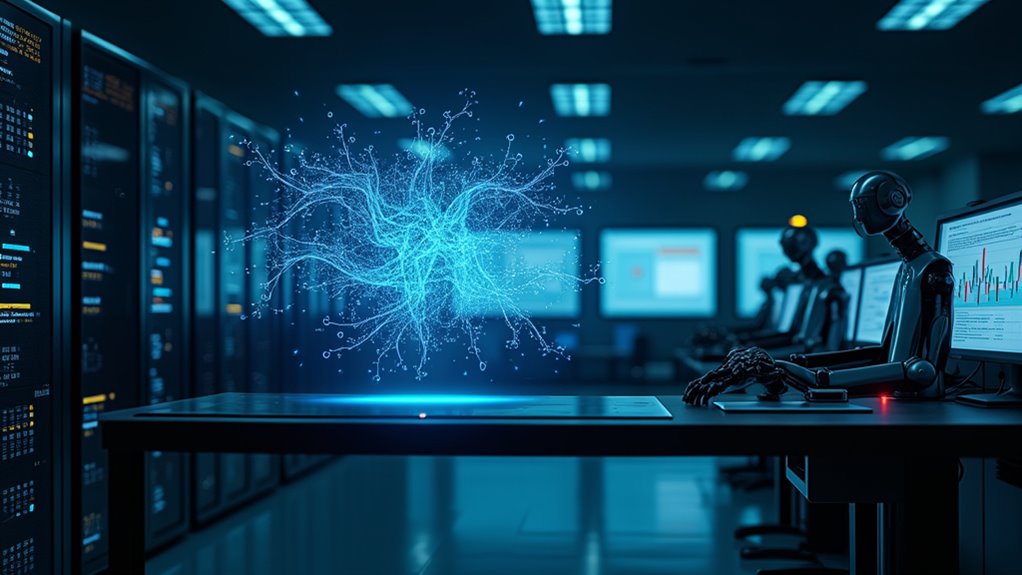AI is revolutionizing cybersecurity defense with lightning-fast threat detection – up to 60% quicker than old-school methods. These digital guardians never sleep, constantly monitoring networks and crushing suspicious activity. Like a tireless security bouncer, AI learns from every interaction, adapting to new threats while automating mundane tasks. It’s basically a crystal ball for cyber attacks, predicting problems before they happen. The cyber battlefield keeps evolving, and AI’s just getting warmed up.
While cybercriminals are getting craftier by the minute, artificial intelligence has emerged as the new sheriff in town for cybersecurity. This digital deputy isn’t just fast – it’s scary fast, detecting cyber threats up to 60% quicker than traditional methods. That’s the difference between catching a thief at your front door versus finding them already ransacking your living room.
AI doesn’t need coffee breaks or power naps. It works 24/7, tirelessly monitoring networks and analyzing massive amounts of data for the slightest hint of suspicious activity. And boy, does it learn fast. These systems are constantly evolving, using machine learning to adapt to new threats like a digital immune system on steroids. When something fishy happens, AI doesn’t just sit there scratching its virtual head – it takes immediate action, isolating compromised systems and blocking malicious IP addresses faster than you can say “cyber attack.” Automated incident response helps organizations minimize downtime and maintain business continuity during security events.
AI never sleeps, never tires, and never stops learning – it’s the relentless guardian of our digital world.
The real magic happens in AI’s predictive capabilities. It’s like having a crystal ball that actually works, analyzing patterns and user behaviors to spot potential threats before they materialize. Continuous learning ensures these systems become more effective at recognizing and responding to threats over time. These systems are so sophisticated they can tell the difference between Bob from accounting having an unusually productive day and a hacker pretending to be Bob while stealing company secrets.
But it’s not all sunshine and algorithms. The same technology that’s protecting our digital assets is being weaponized by the bad guys too. Cybercriminals are using AI to create more sophisticated attacks, turning this into a high-stakes game of digital cat and mouse. While AI brings tremendous benefits to cybersecurity, implementing robust safety measures remains crucial to prevent potential system vulnerabilities.
Despite these challenges, AI has become indispensable in modern cybersecurity. It’s automating routine security checks, handling threat detection, and providing insights that would take human analysts weeks to uncover. In this digital age, AI isn’t just an option anymore – it’s the backbone of effective cybersecurity defense.
